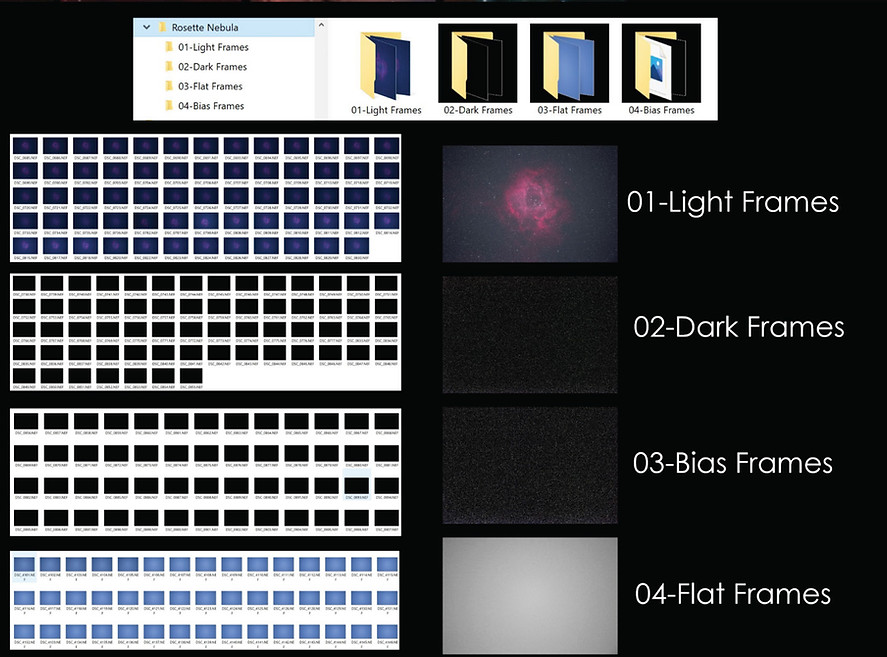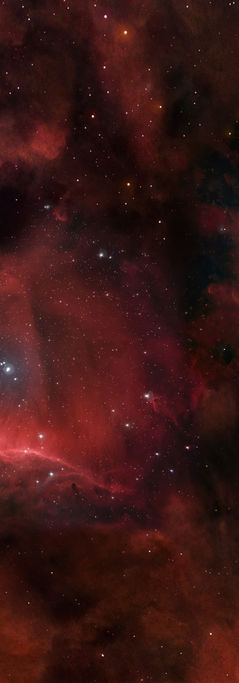
I captured the entire night sky with all its stars , nebulas and galaxies using DSLR and mirrorless cameras and lenses.

I spent in the wilderness 70 nights across different seasons within 4 years, I exposed 2.2 million seconds over 12,200 photos to capture the night skies as seen from the northern hemisphere. Using conventional Dslr and Mirrorless, Cameras and lenses mounted on simple tracking mounts. And this is how it was done.
Practicality and portability was my main concern , I wanted the best possible results from simple setups without any kind of guiding, without using astronomical cameras and telescopes , Keeping it as Simple and as portable as possible.
It is a proof of concept that with a right recipe you can achieve perfect results , all you need is some knowledge with some tools and techniques.
To speed up the process I used multiple cameras with simple tracking mounts and different focal lengths.
The mosaic was all captured from the dark corners of the Arabia



I spent in the wilderness 70 nights across different seasons within 4 years, I exposed 2.2 million seconds over 12,200 photos shooting the night skies as seen from the northern hemisphere. The mosaic was all captured from the dark corners of the Arabia


The Making of : How it's Done

The Process

Stepping into Deep Sky Astrophotography was a continuation to my astrophotography career , I wanted to do something different every while and then. moving from one project to the other is what kept my enthusiasm and passion ignited on throughout the years. I always believed that thinking outside of the box is what every photographer should do to , there are stages that every photographer passes through , there is a dedicated article for that subject that can be of interest.
This previous article in Petapixel https://petapixel.com/2019/09/19/i-shoot-fake-miniature-scenes-with-the-real-milky-way/ elaborated on one of those ideas to break the trend and think outside the box.
Going back to Deep Sky Astrophotography , Practicality and portability was my main concern , I wanted the best possible results from simple setups without any kind of guiding, without using astronomical cameras and telescopes , Keeping it as simple and as portable as possible.
I do not want complications , I do not want wires , computers , power generators , telescopes , heavy mounts. Not only one telescope , there is one more telescope a smaller one I have to attach to my gear and it is called a guiding scope , and it is meant to point at a bright star and use it as a datum to keep on rectifying the periodic error of the mount . This scope needs a small camera and both need more cables and power and it needs a laptop computer and softwares.


I got dizzy from just thinking about it , and I realized that this complication and time consuming process is not my thing,. it will affect creativity and versatility which I always seek.
I did my research and kept on studying my options till i found my perfect recipe. It is a proof of concept that with a right recipe you can achieve perfect results , all you need is some knowledge with some tools and techniques. To speed up the process I used multiple cameras with simple tracking mounts and different focal lengths.
My Setup
Cameras:
-
Nikon D810A
-
Nikon Z6
-
Nikon D780
Lenses:
20mm f1.8, 24-70mm f2.8, 50mm f1.4/f1.8 , 85mm f1.4 , 135mm f2 , 70-200mm f2.8 , 300mm f4, 500mm f4 , 600mm f4
Mounts :
-
Skywatcher star adventurer
-
Ioptron sky guider pro
-
Ioptron CEM25p or EC
Other requirements:
-
Light pollution filters and dual band filters such as :
-
Hutech IDS Dual band filter
-
Optolong CLS filter
-

Planning the Shoot
The planning stage for the shooting trips is without a doubt a very important stage , there are multiple aspects such as the location light pollution , the weather conditions , the moon phase that will significantly impact the results. May be the most important aspect is the location , and over the years I developed a database of locations in the UAE that I usually visit to shoot. astro.


There are tons of software and apps out there that can be utilized in the planning stage , and this is an overview of the ones I use the most.

As the earth rotates around the sun and seasons change , the view of the sky also change with it , and each season being different deep sky objects. and this in itself is a great deal of fun.
The Trip
Each trip is usually sunset to sunrise
The Technique
One single final image of the above mosaic is a result of shooting four types of frames , Let's take one single object "the Rosette nebula" as an example, and go through each and every step of capturing it , or in a better wording “making it” :
The 1st step after aiming your lens to the object is to start exposing your sensor to light emitting from that object , this is why we call it "Light Frames" , it is a process of collecting data of the same object repeatedly for a number of times. similar to interval time shooting in time lapse but the only difference that the camera is moving with the earth movement keeping the object centered in the frame.
Taking shorter exposures with higher ISO and faster aperture as shown below. By increasing the number of frames for later stacking , this technique reduce the random noise significantly and increase the signal to noise ratio (SNR).



The secret lies in the calibration frames , which meant to eliminate the imperfections either from the sensor or from the glass.








Proper data management of your different types of frames per target after eliminating all unwanted / faulty frames is essential for the next step
The Post Processing
The post processing stage is a lengthy process on its own and it requires a lot of time and a lot of computer resources , each deep sky object image take around 3-4 nights of shooting and can take the same amount of time if not more for post processing , below are some insights and details about such stage.


stages of one Single object of the Mosaic : Rosette Nebula
Around 30 Deep Sky Objects framed around the Milky Way , and Yet the list is long....
Despite the fact that I reached some kind of an accomplishment in this project , but I feel that i am still far from being done with it. there are lots of objects that I still need to capture , and there are objects that i need to revisit again. Some objects will require travels to the southern hemisphere.
Maybe this is the beauty of the whole thing , I am always looking forward to the next step.

What's Next
I wanted this to be more than building a huge Mosaic of the milky way , I wanted to create a full experience that contains motion pictures (animations , time lapses and videography) , I want to create an immersive virtual reality experience where you can visit the locations where the shooting took place and dive into the space.
The project started to grow, and the more I elaborate on ideas to develop it the more I felt that I still have a lot to do about it , and this is exactly what art is all about , you never get enough.........





























